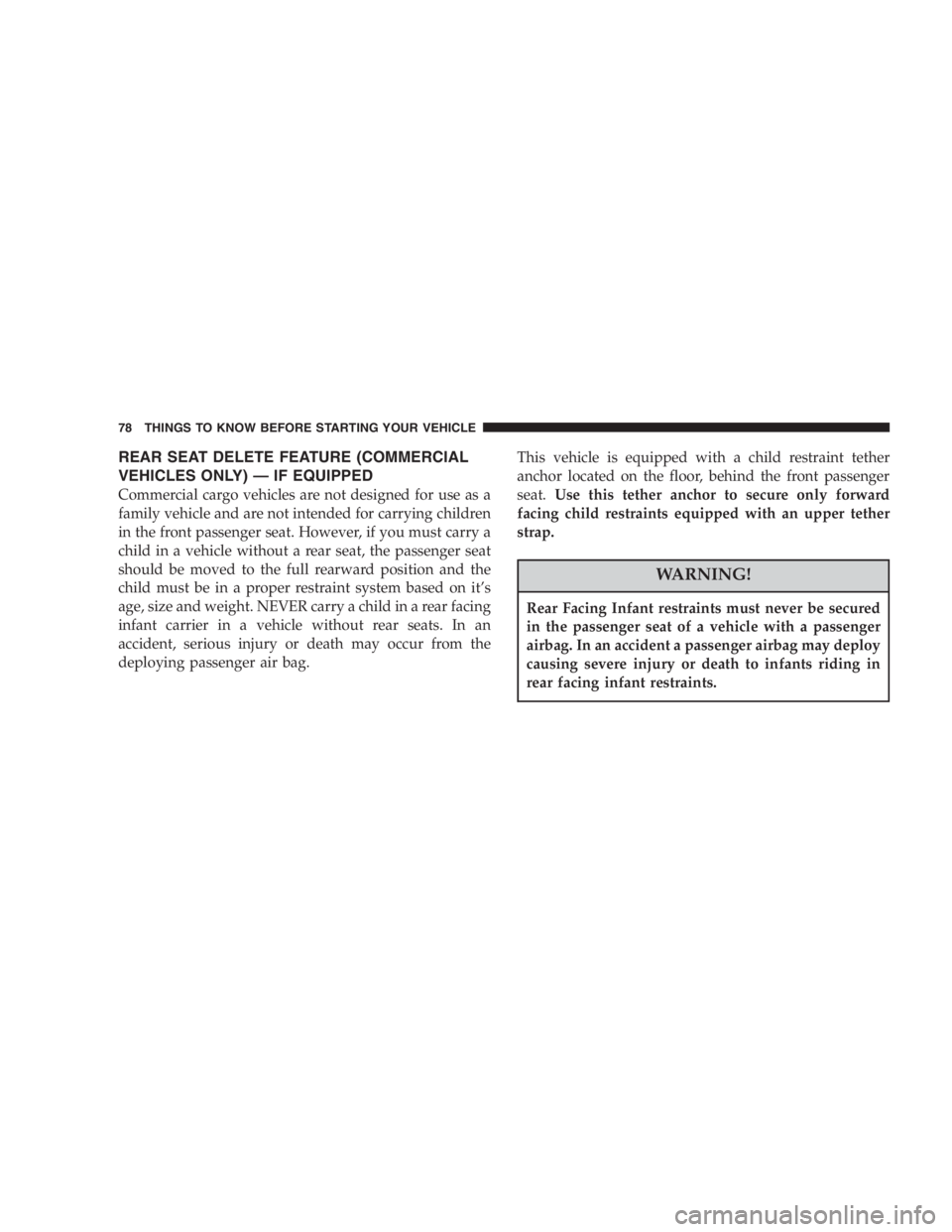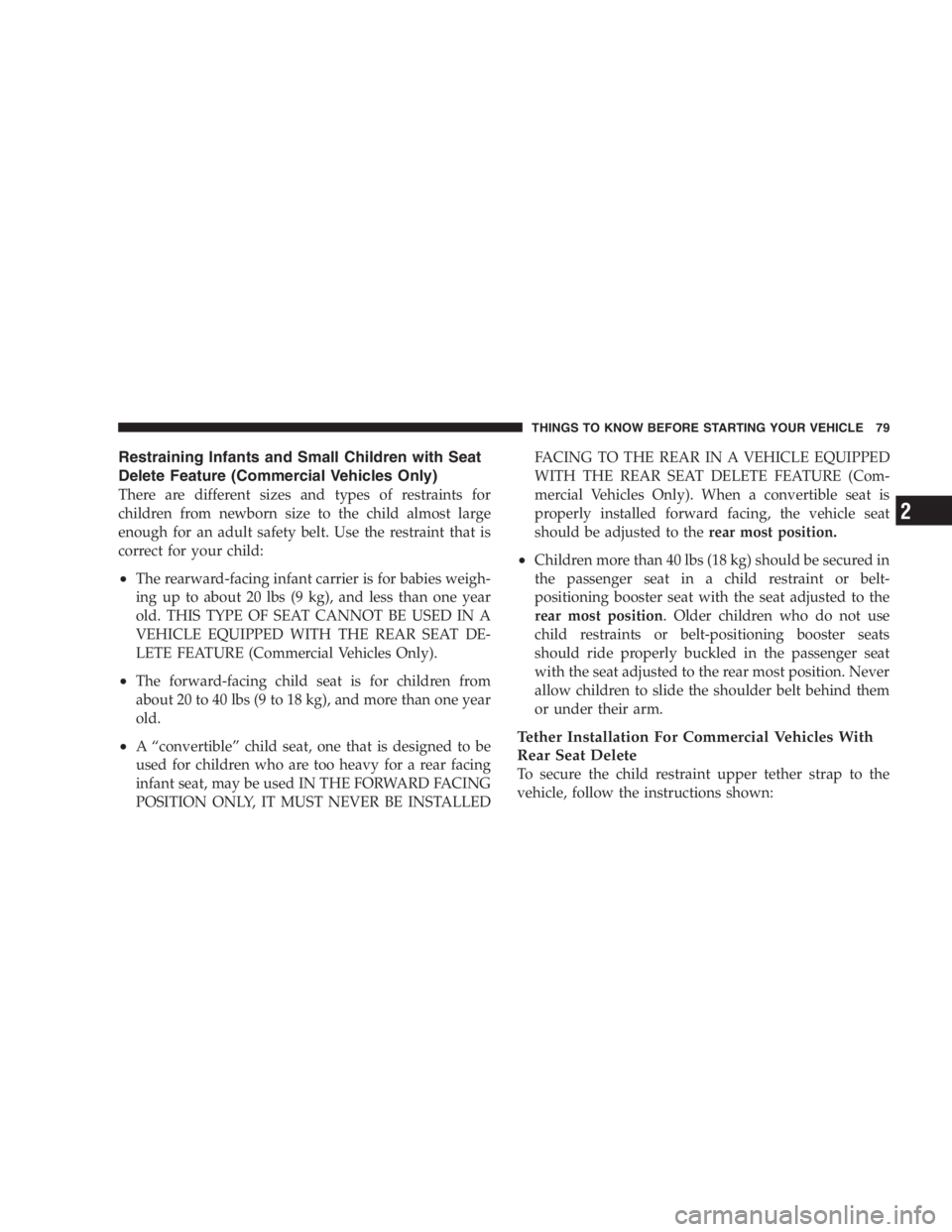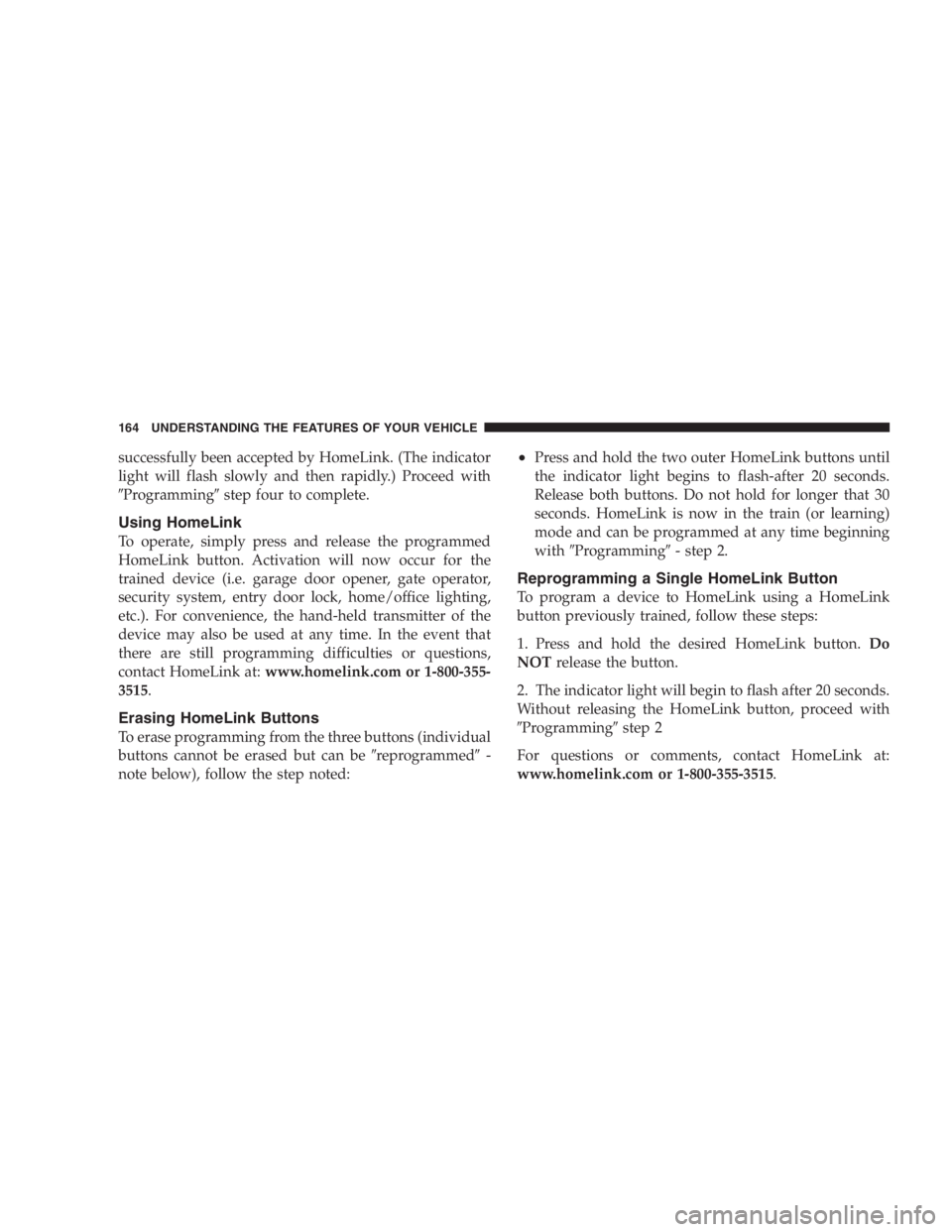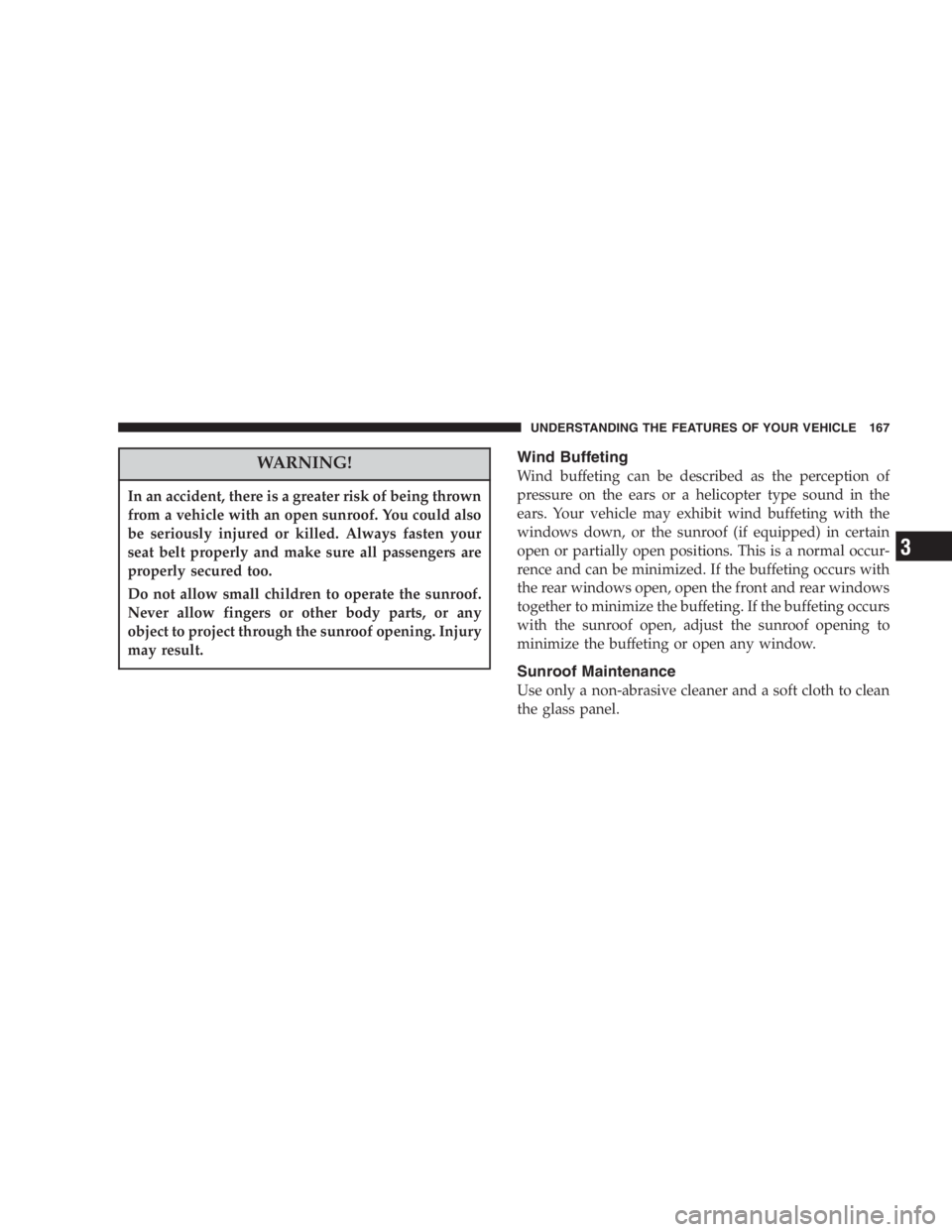Page 78 of 480

REAR SEAT DELETE FEATURE (COMMERCIAL
VEHICLES ONLY) — IF EQUIPPED
Commercial cargo vehicles are not designed for use as a
family vehicle and are not intended for carrying children
in the front passenger seat. However, if you must carry a
child in a vehicle without a rear seat, the passenger seat
should be moved to the full rearward position and the
child must be in a proper restraint system based on it ’ s
age, size and weight. NEVER carry a child in a rear facing
infant carrier in a vehicle without rear seats. In an
accident, serious injury or death may occur from the
deploying passenger air bag. This vehicle is equipped with a child restraint tether
anchor located on the floor, behind the front passenger
seat. Use this tether anchor to secure only forward
facing child restraints equipped with an upper tether
strap.
WARNING!Rear Facing Infant restraints must never be secured
in the passenger seat of a vehicle with a passenger
airbag. In an accident a passenger airbag may deploy
causing severe injury or death to infants riding in
rear facing infant restraints.78 THINGS TO KNOW BEFORE STARTING YOUR VEHICLE
Page 79 of 480

Restraining Infants and Small Children with Seat
Delete Feature (Commercial Vehicles Only)
There are different sizes and types of restraints for
children from newborn size to the child almost large
enough for an adult safety belt. Use the restraint that is
correct for your child:
• The rearward-facing infant carrier is for babies weigh-
ing up to about 20 lbs (9 kg), and less than one year
old. THIS TYPE OF SEAT CANNOT BE USED IN A
VEHICLE EQUIPPED WITH THE REAR SEAT DE-
LETE FEATURE (Commercial Vehicles Only).
• The forward-facing child seat is for children from
about 20 to 40 lbs (9 to 18 kg), and more than one year
old.
• A “ convertible ” child seat, one that is designed to be
used for children who are too heavy for a rear facing
infant seat, may be used IN THE FORWARD FACING
POSITION ONLY, IT MUST NEVER BE INSTALLED FACING TO THE REAR IN A VEHICLE EQUIPPED
WITH THE REAR SEAT DELETE FEATURE (Com-
mercial Vehicles Only). When a convertible seat is
properly installed forward facing, the vehicle seat
should be adjusted to the rear most position.
• Children more than 40 lbs (18 kg) should be secured in
the passenger seat in a child restraint or belt-
positioning booster seat with the seat adjusted to the
rear most position . Older children who do not use
child restraints or belt-positioning booster seats
should ride properly buckled in the passenger seat
with the seat adjusted to the rear most position. Never
allow children to slide the shoulder belt behind them
or under their arm.
Tether Installation For Commercial Vehicles With
Rear Seat Delete
To secure the child restraint upper tether strap to the
vehicle, follow the instructions shown: THINGS TO KNOW BEFORE STARTING YOUR VEHICLE 79
2
Page 90 of 480

▫ Sunglass Storage ......................151
▫ Compass/Temperature Display ...........151
▫ Mini-Trip Computer ...................154
▫ Electronic Vehicle Information Center (EVIC) —
If Equipped .........................155
▫ Customer Programmable Features —
If Equipped .........................156
� Garage Door Opener — If Equipped .........159
▫ Programming Homelink ................160
▫ Canadian Programming/Gate
Programming ........................163
▫ Using Homelink ......................164
▫ Erasing Homelink Buttons ...............164
▫ Reprogramming a Single Homelink Button . . . 164 ▫ Security ............................165
� Power Sunroof — If Equipped .............165
▫ Express Open Feature ..................166
▫ Wind Buffeting .......................167
▫ Sunroof Maintenance ...................167
� Electrical Power Outlets — If Equipped .......168
▫ Electrical Outlet Use With Engine Off .......169
� Convenience Tray Drawer And Cup Holders . . . 170
▫ Instrument Panel Cup Holders ............170
▫ Convenience Tray And Optional Smoker ’ s
Package Kit .........................171
▫ Rear Cupholders ......................17290 UNDERSTANDING THE FEATURES OF YOUR VEHICLE
Page 133 of 480
Next, push to the left the safety catch located under the
front edge of the hood, near the center.
Use the hood prop rod to secure the hood in the open
position. To prevent possible damage, do not slam the hood to
close it. Lower the hood until it is open approximately 30
cm (12 inches) and then drop it. This should secure both
latches. Never drive your vehicle unless the hood is fully
closed, with both latches engaged.
WARNING!If the hood is not fully latched, it could fly up when
the vehicle is moving and block your forward vision.
You could have a collision. Be sure all hood latches
are fully latched before driving.Hood Safety Catch UNDERSTANDING THE FEATURES OF YOUR VEHICLE 133
3
Page 164 of 480

successfully been accepted by HomeLink. (The indicator
light will flash slowly and then rapidly.) Proceed with
� Programming � step four to complete.
Using HomeLink
To operate, simply press and release the programmed
HomeLink button. Activation will now occur for the
trained device (i.e. garage door opener, gate operator,
security system, entry door lock, home/office lighting,
etc.). For convenience, the hand-held transmitter of the
device may also be used at any time. In the event that
there are still programming difficulties or questions,
contact HomeLink at: www.homelink.com or 1-800-355-
3515 .
Erasing HomeLink Buttons
To erase programming from the three buttons (individual
buttons cannot be erased but can be � reprogrammed � -
note below), follow the step noted: • Press and hold the two outer HomeLink buttons until
the indicator light begins to flash-after 20 seconds.
Release both buttons. Do not hold for longer that 30
seconds. HomeLink is now in the train (or learning)
mode and can be programmed at any time beginning
with � Programming � - step 2.
Reprogramming a Single HomeLink Button
To program a device to HomeLink using a HomeLink
button previously trained, follow these steps:
1. Press and hold the desired HomeLink button. Do
NOT release the button.
2. The indicator light will begin to flash after 20 seconds.
Without releasing the HomeLink button, proceed with
� Programming � step 2
For questions or comments, contact HomeLink at:
www.homelink.com or 1-800-355-3515 .164 UNDERSTANDING THE FEATURES OF YOUR VEHICLE
Page 165 of 480

Security
If you sell your vehicle, be sure to erase the frequencies
by following the “ Erasing HomeLink Buttons ” instruc-
tions in this section.
This device complies with part 15 of FCC rules and with
RSS-210 of Industry Canada. Operation is subject to the
following conditions:
• This device may not cause harmful interference.
• This device must accept any interference that may be
received including interference that may cause undes-
ired operation.
NOTE: Changes or modifications not expressly ap-
proved by the party responsible for compliance could
void the user ’ s authority to operate the equipment.
HomeLink � is a trademark owned by Johnson Controls,
Inc. POWER SUNROOF — IF EQUIPPED
The power sunroof control is located between the sun
visors on the overhead console.
Press and hold the switch rearward to fully open the
sunroof. The sunroof can be stopped at any position
between closed and full open. Momentarily pressing the Power Sunroof SwitchesUNDERSTANDING THE FEATURES OF YOUR VEHICLE 165
3
Page 167 of 480

WARNING!In an accident, there is a greater risk of being thrown
from a vehicle with an open sunroof. You could also
be seriously injured or killed. Always fasten your
seat belt properly and make sure all passengers are
properly secured too.
Do not allow small children to operate the sunroof.
Never allow fingers or other body parts, or any
object to project through the sunroof opening. Injury
may result. Wind Buffeting
Wind buffeting can be described as the perception of
pressure on the ears or a helicopter type sound in the
ears. Your vehicle may exhibit wind buffeting with the
windows down, or the sunroof (if equipped) in certain
open or partially open positions. This is a normal occur-
rence and can be minimized. If the buffeting occurs with
the rear windows open, open the front and rear windows
together to minimize the buffeting. If the buffeting occurs
with the sunroof open, adjust the sunroof opening to
minimize the buffeting or open any window.
Sunroof Maintenance
Use only a non-abrasive cleaner and a soft cloth to clean
the glass panel. UNDERSTANDING THE FEATURES OF YOUR VEHICLE 167
3
Page 183 of 480

Distribute cargo weight evenly on the roof rack crossbars.
The roof rack does not increase the total load carrying
capacity of the vehicle. Be sure the total load of cargo
inside the vehicle plus that on the external rack does not
exceed the maximum vehicle load capacity. To move the cross bars, loosen the thumb screws located
at the upper edge of each cross bar approximately six
turns, then move the cross bar to the desired position.
Once the cross bar is in place, retighten the thumb screws
to lock the cross bar into position.
Attempt to move the crossbar again to ensure that it has
properly locked into position.
NOTE: To help control wind noise when installing the
cross bars make sure that the arrows marked on the front
side of the cross bars are facing the front of the vehicle.
Also, when the cross bars are not in use the notch on the
cross bars should be aligned with the arrows on the side
rails. This will help reduce the amount of wind noise
when the crossbars are not in use.
The tie down holes on the cross bar ends should always
be used to tie down the load. Check the straps frequently
to be sure that the load remains securely attached.Roof Rack UNDERSTANDING THE FEATURES OF YOUR VEHICLE 183
3